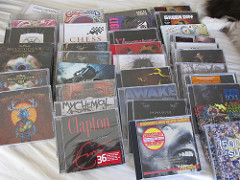These days, listening to music on compact discs and audio tapes is no longer a novelty. But have we ever stopped to wonder how the sound gets there? Recording music involves capturing performances for later playback. This is what musical bands and popular singers do. Then, record labels like Virgin Records and Sony transform them into high-quality tapes or CDs for our enjoyment in cars or wherever we go.
The concept of recording music first emerged when a Swiss watchmaker introduced the first musical box in 1796. It was followed by the phonograph invented by Edison in 1877. Edison created a cylinder with soft materials like lead or tinfoil. A stylus would create grooves on these materials, and the recording was established based on the depth of the grooves and the measured air pressure.
In 1896, Valdemar Poulsen demonstrated magnetic recording. In this method, a tape is continuously moved under a recording head. The head transfers digital data corresponding to the sound onto the tape. The playback head then reads these tapes and decodes the data to play them back.
Initially, magnetic recordings were not popular and were inefficient. People preferred phonographs over magnetic records. For example, in 1932, the BBC started using a tape recorder, which was a large machine that utilized steel tapes. The tape had to be rotated at a speed of 90 meters under different heads, requiring a significant amount of tape. Tapes as long as 3 kilometers and weighing 25 kilograms were used.
However, as time passed, tape recorders improved. With the help of the Germans, a functional tape recorder was finally demonstrated in 1938. This was followed by the introduction of multi-track recording, with Les Paul contributing to advancements in this field. In this type of recording, multiple tracks could be housed on a single tape.
In addition to advancements in magnetic recording, significant developments were also happening in the field of optical film sound recording. In 1927, the movie “The Jazz Singer” amazed audiences as one of the first films to incorporate sound techniques. From then on, the process of recording sound on optical film began earnestly, with “The Jazz Singer” using a method known as the Vitaphone.
The digital era The Evolution of Music and the Digital Era: A Personal Journey - As we stand at the crossroads of technological innovation and creative expression, I find myself reflecting on my journey in the music industry—a journey that began in the late '90s, a pivotal era that marked the beginning of a digital music revolution. It was a time when mp3.com emerged as a groundbreaking platform, offering independent… brought about digital recorders. Introduced in the late 1970s, they quickly gained popularity. Soon, multi-track recorders with stationary heads were being produced, utilizing rotating head technology to record sound onto video tapes. As time went on, compact discs (CDs) became increasingly prevalent, offering higher quality and superior sound. CDs, with laser technology for recording purposes, revolutionized the industry, displacing tape recorders and gramophones that had been popular in the 1960s.
However, the wheel continued to turn, and we witnessed the rise of MP3 players, which allowed us to download and listen to hundreds of songs from one small handheld device. Today, iPods have become the order of the day, enabling us to carry and listen to a large number of songs in our pockets wherever we go.
The journey of sound recording is fascinating and filled with significant milestones. Today, recording is used for storing not only music but also audiobooks and impactful speeches. It has become an integral part of our lives. We often don’t think about the long battle this technology had to go through before reaching its current state when we simply insert a CD into our computers or CD players.
Manuel Marino is a seasoned Senior Producer, Music Composer, and Artist with over a decade of experience. He specializes in branded entertainment across various mediums, including video games, films, and advertising campaigns. With 20+ years as a game music composer, Manuel has worked on numerous platforms, creating diverse orchestral soundtracks. HIRE ME


 Manuel is a passionate, driven, and techsavvy AV technician,
Manuel is a passionate, driven, and techsavvy AV technician, 










